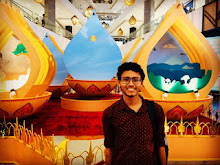“Tarikshir: The
Awakening” by Khayaal Patel is the perfect blend of history and mythology you
might be looking for. The author does an amazing job in structuring his
storyline to give off modern feels but derive its roots from ancient mythical
lore. As a consequence, the book becomes a fascinating recasting of myth into
reality, and of the dissolution of legends into the mundane life of the common
man.
The author has very wittily chosen two very eventful and popular timeframes to create his plot. He starts the book through a chapter that dates back to the times of Lord Ram. He portrays a vanar called Valikesh and structures that particular segment of the story to the times when Ravan has just been defeated by Ram’s army. Valikesh stumbles upon an unnamed mythical beast after getting in contact with a gemstone and then succumbs to the mysterious creature. The story then leaps forward to the era of British colonialism in India. Raja Ravindra, the king of the mighty province of Devangrah is being threatened by the British forces to either surrender his land or else resort to war. It is then that we get the first glimpse of the protagonist Rudra, the prince of Devangarh. Soon the dogs of war are unleashed and Raja Ravindra engages in battle. But under suspicious circumstances, the king gets killed in a fire that breaks out in his tent. Awed to find himself to be the heir of Devangarh and desperate to prove that his father’s death was a consipiracy, Rudra frantically rummages through the history of his kingdom, hoping to find clues. The secrets that he finds, takes him back to the mythical beast of Tarikshir, once employed by the demon king Ravan. What relation does Tarikshir have with the Rajputs of Devangarh? And will Rudra be able to unravel the mystery behind his father’s demise? What unsaid stances of the past is lurking in the corners to mislead and puzzle him?
Although the plot is stitched with
derivations from numerous mythical fables, incidents of history and other
mythological interpretations; the author never lets his storyline get tangled
beyond rescue. His expertise in successfully carrying many sub-plots in various
time frames throughout the book is largely visible. The legend of the mythical
Tarikshir he creates, along with his fictitious inclusion of various stories
ingrained in folklore and mythology; is both intriguing and engaging. Thereby,
the storyline achieves a great balance between reality and fantasy. Be it
Rudra’s innocent gallantness, his determination to save his kingdom or the air of
horror and mysticism that Tarikshir carries, it all holds the capacity to enchant
and mesmerize the readers. On a larger perspective, the book can be called as an
indirect discourse on fierce patriotism, and the urge to protect one’s ancestral
lineage. It also portrays greed and corruption of power quite simply, and never
lets it seem like an imposition. Even with all this, there should have been
more depth in Rudra’s decision making or a slight novelty in the way the story
is sequenced. The concept of resurrection of ancient demons, or the idea of
bringing mythical epic heroes into the framework of the modern times has been
dealt with very repeatedly by contemporary authors. Khaayal Patel’s writing is
not as mature or as equipped with multi-shaded emotions like that of Amish
Tripathi, nor is it as ingenious in thinking as that of Kevin Missal. But even then,
it certainly retains the factor of reimagination and creativity that popular mythological
fiction is characterised with. Overall, it’s a great book that has ventured out
to create an entirely different fictitious universe with the teenage Rudra at
the centre, that is bound to be cherished by children and adults alike.
➦Check out the book here !






Post a Comment